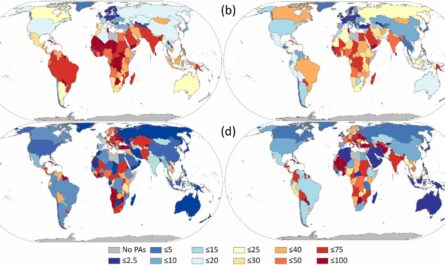The study emphasizes the importance of using clear and consistent language when incorporating AI tools for detecting HAIs, showcasing the potential of AI technology as an economical component for routine infection surveillance programs.
The Centers for Disease Control and Prevention’s HAI Hospital Prevalence Survey reported around 687,000 HAIs in acute care hospitals in the U.S. in 2015, with 72,000 HAI-related deaths among hospital patients. Approximately 3% of all hospital patients have an HAI at any given time.
Although infection surveillance programs and prevention protocols have helped reduce the incidence of HAIs, they remain a significant risk, especially for critically ill hospitalized patients with inserted devices like central lines, catheters, or breathing tubes.
Many health care facilities have HAI surveillance programs in place to monitor increased infection risks, but these programs demand substantial resources, training, and expertise for maintenance. To address this challenge in resource-limited environments, cost-effective solutions, such as AI technology, could help improve surveillance programs and safeguard high-risk patients more effectively.
The study, conducted by researchers at Saint Louis University and the University of Louisville School of Medicine, assessed the effectiveness of two AI-powered tools in accurately identifying HAIs. The tools, developed using OpenAI’s ChatGPT Plus and an open-source large language model called Mixtral 8x7B, were evaluated on two types of HAIs – central line-associated bloodstream infection (CLABSI) and catheter-associated urinary tract infection (CAUTI).
Presented with descriptions of six fictional patient scenarios of varying complexities, the AI tools were asked to determine whether the scenarios represented CLABSI or CAUTI based on information like the patient’s age, symptoms, admission date, and insertion/removal dates of central lines or catheters. When provided with clear prompts, both AI tools accurately identified the HAIs across all six cases. However, missing or ambiguous details in the descriptions hindered the AI tools’ performance, emphasizing the necessity of complete and precise information for accurate results.
Dr. Timothy L. Wiemken, the lead author of the paper and an associate professor at Saint Louis University, highlighted the significance of human oversight in utilizing AI technology for HAI surveillance. The study’s findings endorse the ongoing development of AI tools with real-world patient data to support infection preventionists in their critical responsibility of ensuring patient safety.
Dr. Tania Bubb, the 2024 APIC president, acknowledged the potential of AI-powered tools in enhancing surveillance programs to aid infection preventionists in their daily tasks, emphasizing the importance of leveraging every available tool to safeguard patients
Note:
1. Source: Coherent Market Insights, Public sources, Desk research
2. We have leveraged AI tools to mine information and compile it



